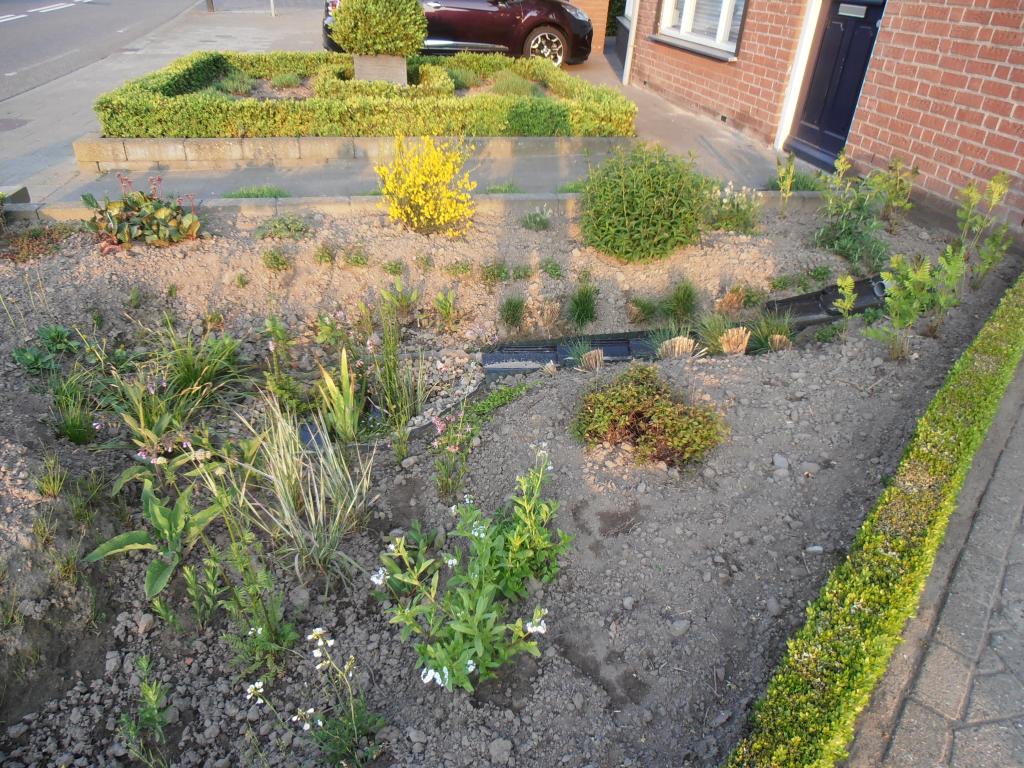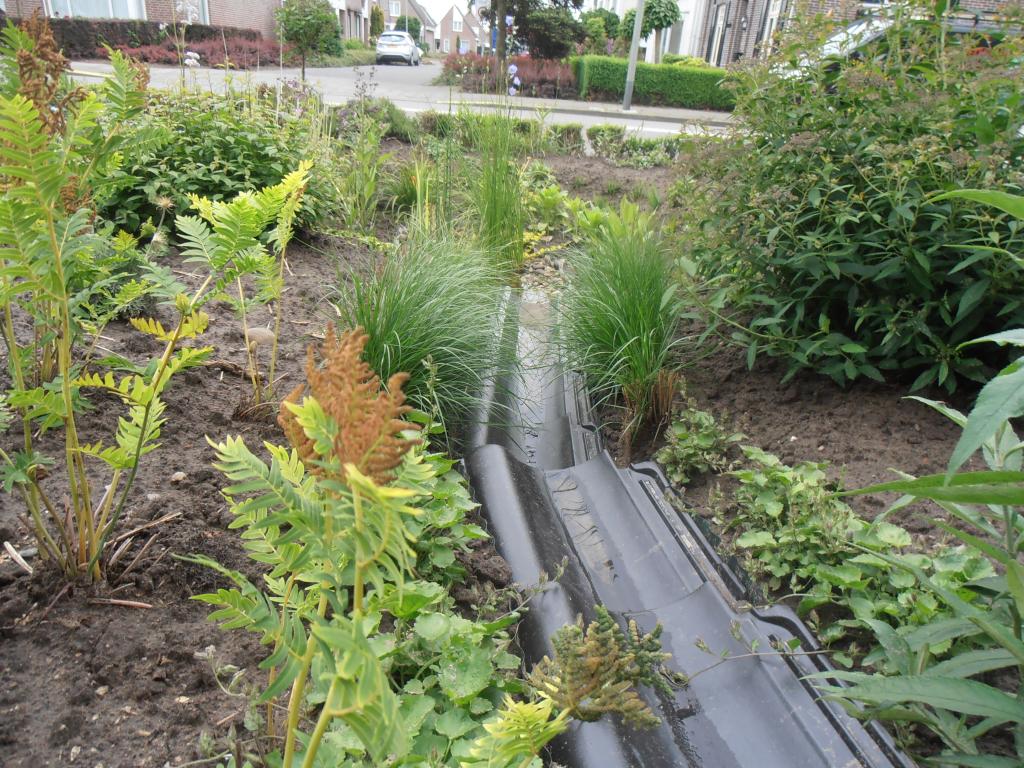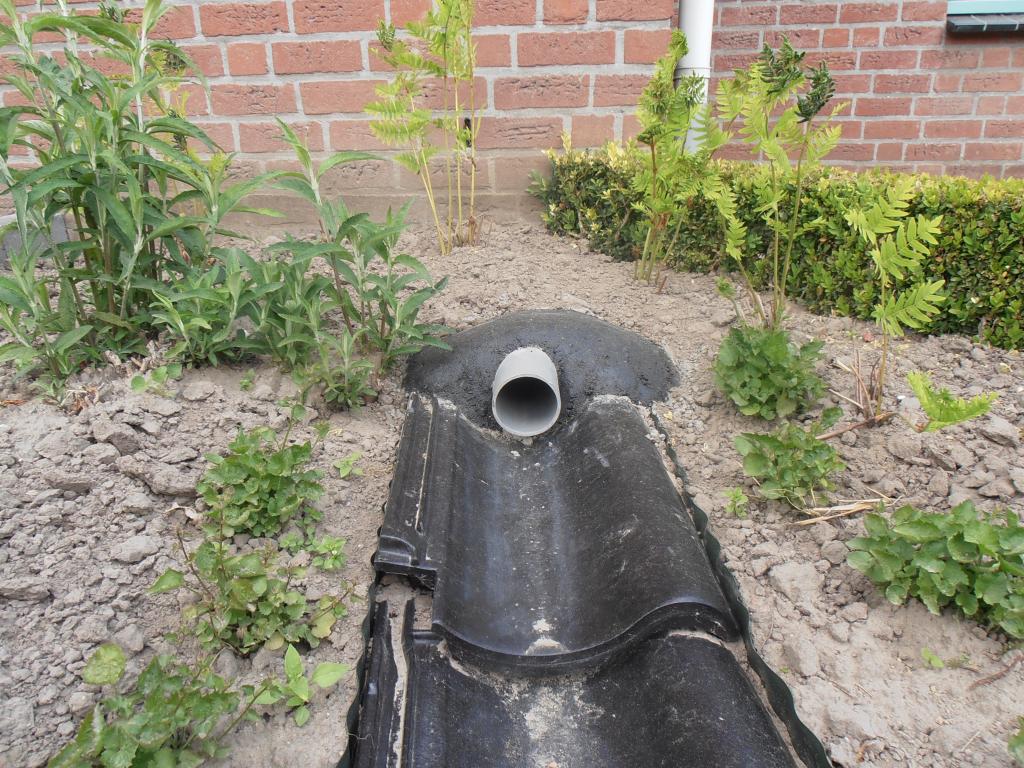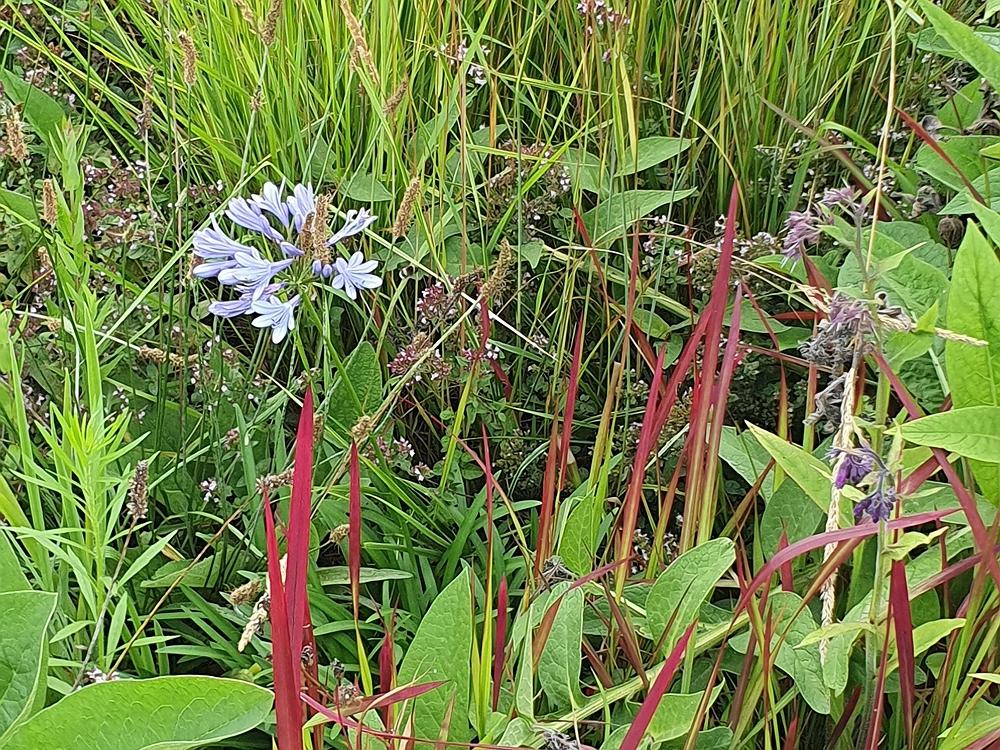Wadi with plants
One of the easiest solutions to collect rainwater from your roof and garden is a wadi. The word wadi stands for water drainage by infiltration.
A wadi is a lowered area of the garden where water flows (via a gutter, pipe or surface) to it. The water then sinks into the soil. A wadi can be a low grassy area, or it can be lowering planted with plants that can withstand water and drought. It not only looks nice, but is also good for biodiversity! A wadi with plants also silt up less quickly compared to grass.
View the wildflower mixture for wadis here.
Cost
The construction and planting of a wadi hardly costs more than the construction of an ordinary garden. Additional costs may include the construction of a gutter between the downspout and the wadi.
Space use
A wadi or lowered lawn need not cost additional space.
Difficulty
For a wadi with plants, you need to know which plants can withstand drought and water. Usually these are riparian plants (also called zone 1 plants) that you can find in a garden center among the pond plants. In addition, most grasses are suitable. Get information from garden center staff.
Earthmoving
Most gardens are flat. If this is the case, you need to dig a pit. Often you can dispose of the resulting soil somewhere else in the garden. However, the garden should be low enough facing your home to avoid nuisance during heavy rain.
Maintenance
A lowered lawn is more difficult to mow than a flat lawn. Don't lay the slopes too steep. An embankment is the sloping surface you dig down. The more sloping, the harder it is to mow a grass wadi. If a wadi is well planted and after a year it is well established, it requires very little maintenance. Most weed species cannot stand water and drought. It is sufficient to prune back the plants at the end of winter and remove fallen leaves. Weeds that do take root can be removed manually.
Climate Goals
The planted wadi reduces heat stress. A grass wadi becomes arid during a period of prolonged drought and evaporates little water. The plants in a wadi remove most of the pollutants contained in rainwater. This keeps the soil clean. A wadi with flowering plants is not only beautiful, but also good for biodiversity. Finally, if the wadi is large enough, all the rainwater is collected and added to the groundwater.
Biodiversity
Contribution to improving biodiversity



